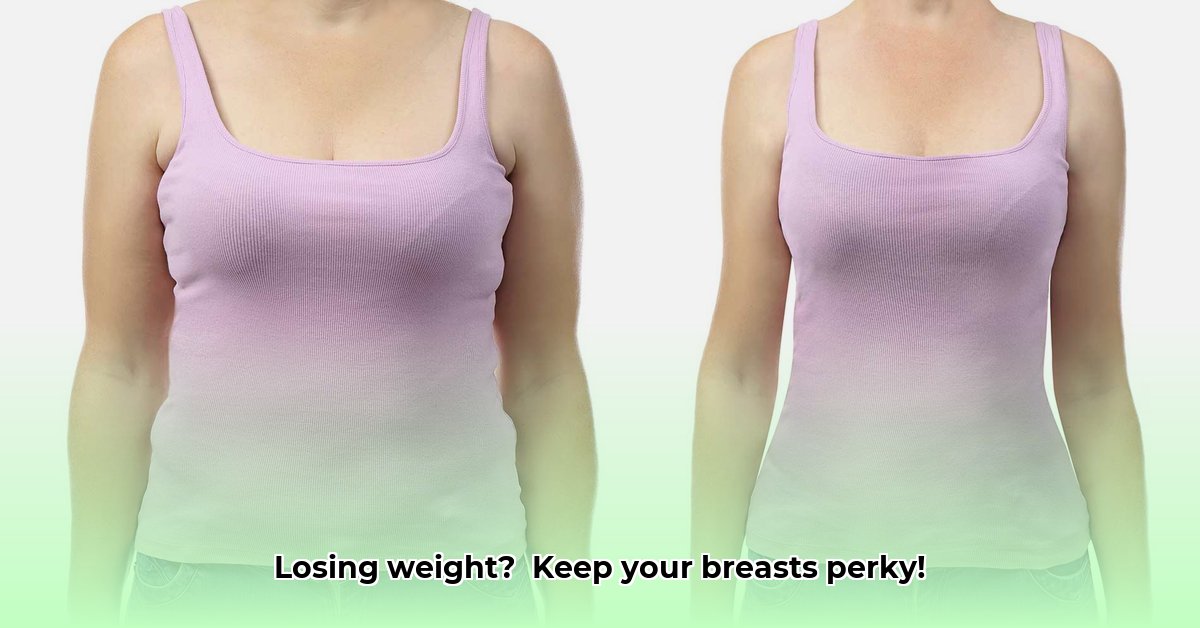
Losing weight is a significant accomplishment, but it can sometimes lead to changes in breast size and shape. Many women experience breast shrinkage and sagging after weight loss, sparking concerns about their appearance. This comprehensive guide addresses these concerns, providing you with the scientific understanding and practical strategies needed to navigate these changes confidently.
Understanding the Science Behind Breast Changes During Weight Loss
Your breasts are primarily composed of fatty tissue, glandular tissue, and connective tissue. Weight loss primarily affects the fatty tissue. When you lose weight, your breasts naturally decrease in size as the fat content diminishes. This is a simple consequence of reduced overall body fat. However, the extent of change isn't solely determined by the amount of weight lost.
Genetic and Age-Related Factors
Genetics play a significant role in how your skin responds to weight changes. Individuals with naturally more elastic skin may experience less sagging than those with less elastic skin. Age is another critical factor; as you age, your skin loses elasticity, making sagging more likely.
Rate of Weight Loss
The speed of weight loss matters. Rapid weight loss can stretch the skin more significantly than gradual weight loss, increasing the likelihood of sagging. A slower, steadier approach is generally kinder to your body.
Individual Variability in Response to Weight Loss
Every woman's body is unique. Breast changes after weight loss are highly individualized and depend on several factors:
- Initial Breast Size: Women with larger breasts might experience more noticeable changes due to the larger volume of fat tissue.
- Body Composition: Overall body composition influences how your body responds to weight loss.
- Prior Pregnancy and Breastfeeding: These experiences can affect breast skin elasticity.
- Genetics: Family history of skin elasticity influences the severity of sagging.
Managing Breast Changes After Weight Loss: A Practical Guide
This section outlines practical strategies to minimize or manage breast changes associated with weight loss.
1. Gradual Weight Loss Strategies: Aim for a healthy weight loss rate of 1-2 pounds per week. This slow and steady approach allows your skin to adapt gradually, minimizing sagging. How can I ensure a gradual, healthy weight loss?
2. Supportive Bras: Invest in well-fitting, supportive bras that provide adequate lift and minimize breast movement. Look for bras with wide straps and a secure underband. A supportive bra can significantly improve comfort and potentially reduce sagging. What type of bra is best for support during weight loss?
3. Chest Exercises: While exercise can't completely prevent sagging, strengthening the pectoral muscles can improve tone and potentially offer slight improvement in breast appearance. Incorporate exercises like push-ups, chest presses, and dumbbell flyes into your routine. Remember always consult with a physician or physical therapist before starting a new workout routine. What chest exercises are most effective without equipment?
4. Non-Surgical Options: Various creams and serums claim to improve skin elasticity. However, substantial scientific evidence supporting their efficacy in preventing or reducing breast sagging is limited. Always be cautious of unsubstantiated claims and look for products backed by research. Are there any non-surgical options supported by robust scientific evidence?
5. Surgical Options: For significant sagging or volume loss that causes distress, surgical options such as a breast lift (mastopexy) or augmentation may be considered. These procedures carry risks, require extensive recovery, and involve financial costs. A consultation with a board-certified plastic surgeon is crucial to discuss your options, risks, and expectations. What are the risks and benefits of breast lift surgery?
Maintaining Breast Health: Long-Term Strategies
Maintaining a healthy weight, eating a balanced diet, staying hydrated, and practicing regular self-exams are essential for long-term breast health. Regular mammograms as recommended by your doctor remain a crucial preventative measure.
Conclusion: Embracing Your Journey
Remember, changes in breast shape and size after weight loss are common. It's crucial to prioritize overall health and well-being. Don't hesitate to consult with healthcare professionals—a physician or plastic surgeon—to address any concerns and explore the best options for you. Your confidence and self-acceptance are paramount throughout your weight-loss journey.